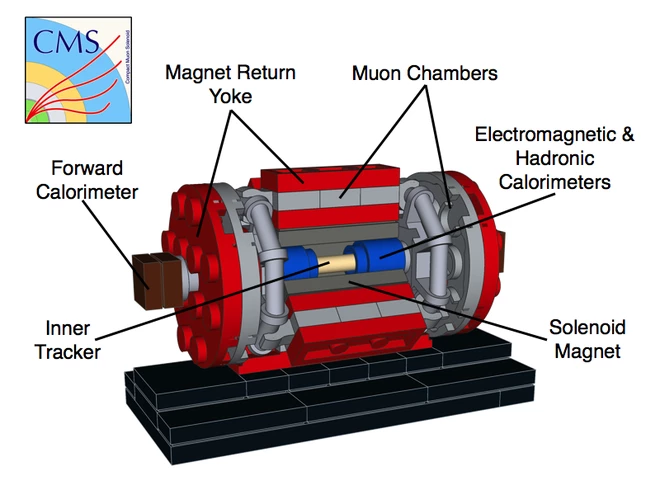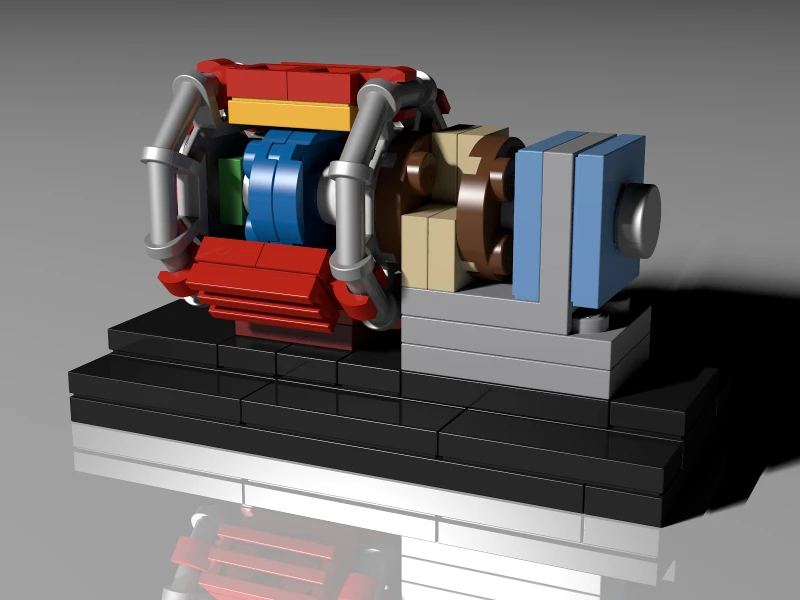Ever wanted to build a particle accelerator in your basement? Well if one University of Liverpool PhD student gets his way, you may soon be able to do that – with LEGO. Of course, it's not a working model, but Nathan Readioff's Large Hadron Collider (LHC) proposal to LEGO is now a real contender for production as an official LEGO kit, complete with miniature cutaway versions of all the LHC's major components.
The real LHC is based at CERN in Switzerland, and is the biggest and most powerful particle accelerator ever built. Capable of accelerating protons to near light speeds and then obliterating them in collisions with other similarly accelerated protons hurtling around in the opposite direction, this enormous and impressive machine is an awe-inspiring piece of technology.
Using four gigantic detectors, A Large Ion Collider Experiment (ALICE), A Toroidal LHC Apparatus (ATLAS), LHC-beauty(LHCb), and Compact Muon Solenoid (CMS), remnants from the massive proton collisions are recorded. The particles found therein may include new, unusual, or uncommon ones that physicists can study to help them understand more about the elementary nature of the cosmos.

All with varying and specific purposes, these detectors are where many new and interesting discoveries have been made. In the ATLAS and CMS detectors, for example, is where the Higgs Boson was discovered. The LHCb is used to analyze the behavior of particles containing "beauty" quarks through the anomalies found between matter and antimatter, whilst the ALICE detector is employed in the esoteric examination of a weird form of matter known as a quark-gluon plasma.
In Readioff's proposal, all four of these detectors are represented in miniature and with cutaways to show the major components in each. Stylized to avoid over-complicating the models with fiddly, extraneous detail, each one does however accurately depict the overall construction of their full-size counterparts. Also, they are not absolutely to scale with each other, with each detector set on a base of the same dimensions to provide a more visually consistent look to the set.
The huge size of the entire LHC makes the inclusion of any meaningfully-scaled model in the kit impossible, so the proposed set includes four accurate replicas of the LHC's dipole magnets so that an accurate, but very much smaller, depiction of the LHC can be made.

Based on official drawings of the detectors, the color schemes are also true to the original. Each set on a black LEGO base, Readioff suggests that each of these could also have a printed name of the detector displayed, in line with the conventions found in the Lego Architecture series of models.
Readioff, who is currently working on the real ATLAS detector at CERN, has also proposed an addition to his model in the form of a representative miniature of the real LHC control center as well as a set of instruction manuals that would contain some information about the work done at CERN, a description of the real-world detectors and a description of the physics involved.
Now in line for deliberation and consideration for an official kit to be produced by LEGO, the project moves from the Idea stage to the Review stage. A LEGO Review will study the idea, and a LEGO team will build concept models to determine if the proposal meets LEGO product standards such as playability, safety, and alignment with the LEGO brand.
It will be at least several months before the LEGO review will hand down its recommendations and, if successful, the LHC concept can move to the next stage.
Source: Lego Ideas

















